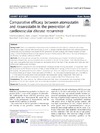Please use this identifier to cite or link to this item:
https://accedacris.ulpgc.es/jspui/handle/10553/59989
| DC Field | Value | Language |
|---|---|---|
| dc.contributor.author | Perez-Calahorra, Sofía | en_US |
| dc.contributor.author | Laclaustra, Martin | en_US |
| dc.contributor.author | Marco-Benedi, Victoria | en_US |
| dc.contributor.author | Pinto, Xavier | en_US |
| dc.contributor.author | Sánchez-Hernández, Rosa | en_US |
| dc.contributor.author | Plana, Núria | en_US |
| dc.contributor.author | Ortega, Emilio | en_US |
| dc.contributor.author | Fuentes, Francisco | en_US |
| dc.contributor.author | Civeira, Fernando | en_US |
| dc.date.accessioned | 2019-12-29T10:08:24Z | - |
| dc.date.available | 2019-12-29T10:08:24Z | - |
| dc.date.issued | 2019 | en_US |
| dc.identifier.issn | 1476-511X | en_US |
| dc.identifier.other | Scopus | - |
| dc.identifier.other | WoS | - |
| dc.identifier.uri | https://accedacris.ulpgc.es/handle/10553/59989 | - |
| dc.description.abstract | Background: There is no randomized clinical trials with recurrence of atherosclerotic cardiovascular disease (ASCVD) as a major outcome with rosuvastatin. In order to analyze potential differences in the clinical response to atorvastatin and rosuvastatin in secondary ASCVD prevention, we have analyzed the clinical evolution of those subjects of the Dyslipemia Registry of the Spanish Society of Arteriosclerosis (SEA) who at the time of inclusion in the Registry had already suffered an ASCVD. Methods: This observational, retrospective, multicenter, national study was designed to determine potential differences between the use of atorvastatin and rosuvastatin in the ASCVD recurrence. Three different follow-up start-times were performed: time of inclusion in the registry; time of first event if this occurred after 2005, and time of first event without date restriction. Results: Baseline characteristics were similar between treatment groups. Among atorvastatin or rosuvastatin users, 89 recurrences of ASCVD were recorded (21.9%), of which 85.4% were coronary. At the inclusion of the subject in the registry, 345 participants had not suffered a recurrence yet. These 345 subjects accumulated 1050 person-years in a mean follow-up of 3 years. Event rates were 2.73 (95% CI: 1.63, 4.25) cases/100 person-years and 2.34 (95% CI: 1.17, 4.10) cases/100 person-years in the atorvastatin and rosuvastatin groups, respectively. There were no statistically significant differences between the two groups independently of the follow-up start-time. Conclusions: This study does not find differences between high doses of rosuvastatin and atorvastatin in the recurrence of ASCVD, and supports their use as clinically equivalent in secondary prevention of ASCVD. | en_US |
| dc.language | eng | en_US |
| dc.relation.ispartof | Lipids in Health and Disease | en_US |
| dc.source | Lipids in Health and Disease [ISSN 1476-511X], v. 18 (216) (Diciembre 2019) | en_US |
| dc.subject | 320501 Cardiología | en_US |
| dc.subject.other | Rosuvastatin | en_US |
| dc.subject.other | Atorvastatin | en_US |
| dc.subject.other | Secondary prevention | en_US |
| dc.subject.other | High-potent statin | en_US |
| dc.title | Comparative efficacy between atorvastatin and rosuvastatin in the prevention of cardiovascular disease recurrence | en_US |
| dc.type | info:eu-repo/semantics/article | en_US |
| dc.type | Article | en_US |
| dc.identifier.doi | 10.1186/s12944-019-1153-x | en_US |
| dc.identifier.scopus | 85076365577 | - |
| dc.identifier.isi | 000510489600001 | - |
| dc.contributor.authorscopusid | 49864143900 | - |
| dc.contributor.authorscopusid | 10046356900 | - |
| dc.contributor.authorscopusid | 57189493797 | - |
| dc.contributor.authorscopusid | 7004430064 | - |
| dc.contributor.authorscopusid | 57203232814 | - |
| dc.contributor.authorscopusid | 22980898600 | - |
| dc.contributor.authorscopusid | 8281845100 | - |
| dc.contributor.authorscopusid | 55650129500 | - |
| dc.contributor.authorscopusid | 35517335700 | - |
| dc.identifier.eissn | 1476-511X | - |
| dc.identifier.issue | 216 | - |
| dc.relation.volume | 18 | en_US |
| dc.investigacion | Ciencias de la Salud | en_US |
| dc.type2 | Artículo | en_US |
| dc.contributor.daisngid | 1403031 | - |
| dc.contributor.daisngid | 576146 | - |
| dc.contributor.daisngid | 2491184 | - |
| dc.contributor.daisngid | 31800930 | - |
| dc.contributor.daisngid | 3549698 | - |
| dc.contributor.daisngid | 335717 | - |
| dc.contributor.daisngid | 511489 | - |
| dc.contributor.daisngid | 32138999 | - |
| dc.contributor.daisngid | 89578 | - |
| dc.description.numberofpages | 6 | en_US |
| dc.utils.revision | Sí | en_US |
| dc.contributor.wosstandard | WOS:Perez-Calahorra, S | - |
| dc.contributor.wosstandard | WOS:Laclaustra, M | - |
| dc.contributor.wosstandard | WOS:Marco-Benedi, V | - |
| dc.contributor.wosstandard | WOS:Pinto, X | - |
| dc.contributor.wosstandard | WOS:Sanchez-Hernandez, RM | - |
| dc.contributor.wosstandard | WOS:Plana, N | - |
| dc.contributor.wosstandard | WOS:Ortega, E | - |
| dc.contributor.wosstandard | WOS:Fuentes, F | - |
| dc.contributor.wosstandard | WOS:Civeira, F | - |
| dc.date.coverdate | Diciembre 2019 | en_US |
| dc.identifier.ulpgc | Sí | es |
| dc.description.sjr | 0,942 | |
| dc.description.jcr | 2,906 | |
| dc.description.sjrq | Q1 | |
| dc.description.jcrq | Q3 | |
| dc.description.scie | SCIE | |
| item.grantfulltext | open | - |
| item.fulltext | Con texto completo | - |
| crisitem.author.dept | GIR IUIBS: Diabetes y endocrinología aplicada | - |
| crisitem.author.dept | IU de Investigaciones Biomédicas y Sanitarias | - |
| crisitem.author.dept | Departamento de Ciencias Médicas y Quirúrgicas | - |
| crisitem.author.orcid | 0000-0003-4991-7445 | - |
| crisitem.author.parentorg | IU de Investigaciones Biomédicas y Sanitarias | - |
| crisitem.author.fullName | Sánchez Hernández, Rosa María | - |
| Appears in Collections: | Artículos | |
SCOPUSTM
Citations
18
checked on Jun 8, 2025
WEB OF SCIENCETM
Citations
19
checked on Jun 8, 2025
Page view(s)
200
checked on Feb 22, 2025
Download(s)
121
checked on Feb 22, 2025
Google ScholarTM
Check
Altmetric
Share
Export metadata
Items in accedaCRIS are protected by copyright, with all rights reserved, unless otherwise indicated.
